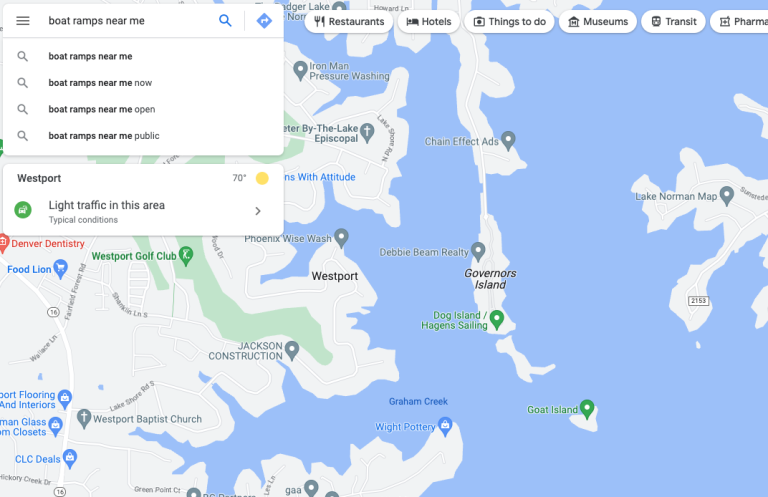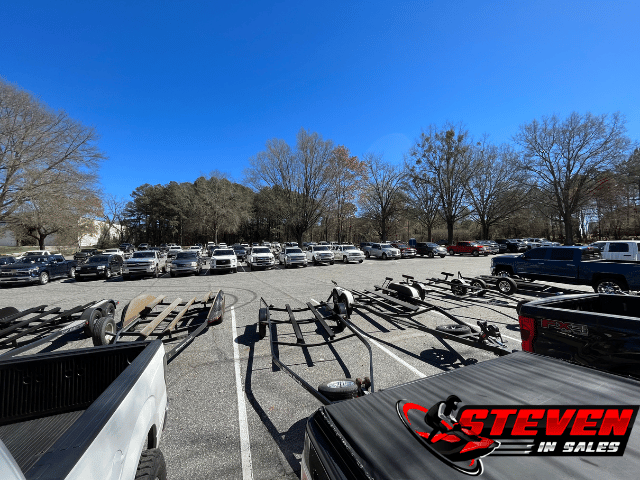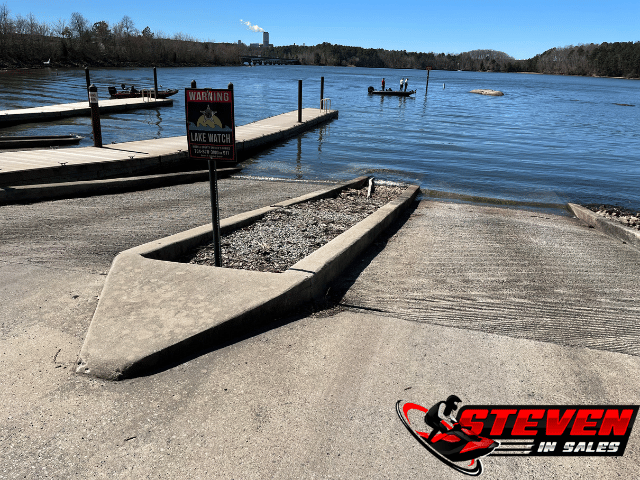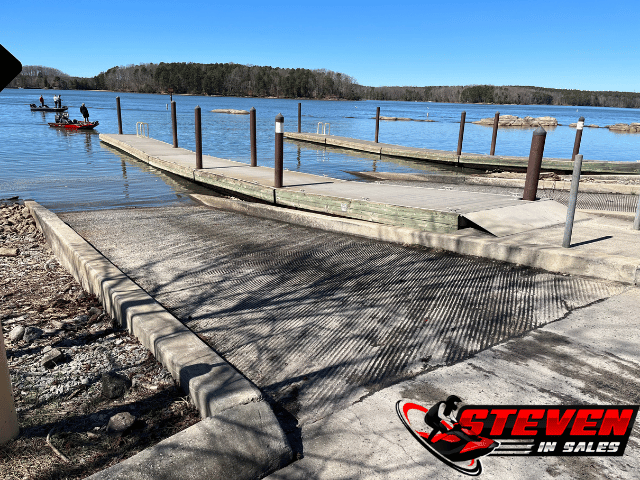Now that you have a PWC, you’re ready to hit the water! But wait, if you don’t live on the water, where do you go?
You start to have questions like: Where do you find some ramps? Can a PWC use the same ramps as boats? Are there any special things you need to consider when launching?
These are super common questions I get from readers new to watercraft. It’s a lot to take in when you’re new to the sport and can be a bit scary.
That is why I created this post. I want to help you find the best places to put your PWC in the water and go over the common questions I get from readers. There is a lot to cover, so let’s get right to it below!
1. TakeMeFishing.org
The people at TakeMeFishing.org have created the perfect tool for finding local boat launches! (And fishing spots!)
2. Google Maps
The tool from TakeMeFishing.org will be the easiest way to find a boat launch near you, but I like to use Google Maps.
Many of you may have Google Maps installed and not know it can locate boat launches. It used to be my go-to for finding ramps to launch my jet ski until better options came along.
Still useful in a pinch!
How To Use Google Maps To Find Them
To find boat launches in Google Maps is easy:

- Go to https://www.google.com/maps/ or Open the Google Maps app on your phone.
- Then enter in “boat ramps near me” in to the search box.
- If you want FREE, then search for “public access boat launch near me”.
The great thing I found about using Google Maps is that they’ll give you directions by car on how to get there from your current location. You can also see from the Google Earth view where to park your truck and trailer and how to navigate around the ramps!
3. Your State’s Wildlife Resources
Every state has a wildlife department and will list off all boat launches near you. There are also a few websites in those states that give you even better information.
I’ve listed all 50 States in order and linked to their wildlife resources or websites.
- Alabama
- Alaska
- Arizona
- Arkansas
- California
- Colorado
- Connecticut
- Delaware
- Florida
- Georgia
- Hawaii
- Idaho
- Illinois
- Indiana
- Iowa
- Kansas
- Kentucky
- Louisiana
- Maine
- Maryland
- Massachusetts
- Michigan
- Minnesota
- Mississippi
- Missouri
- Montana
- Nebraska
- Nevada
- New Hampshire
- New Jersey
- New Mexico
- New York
- North Carolina
- North Dakota
- Ohio
- Oklahoma
- Oregon
- Pennsylvania
- Rhode Island
- South Carolina
- South Dakota
- Tennessee
- Texas
- Utah
- Vermont
- Virginia
- Washington
- West Virginia
- Wisconsin
- Wyoming
They’re Not All The Same
Not all of them are the same, with varying ramp sizes.
Large boats must use suitable ramps due to potential sharp drop-offs.
Water level changes can lead to shorter ramps closing.
Understand the launch type; jet skis can’t use kayak ramps, which often have non-trailer-friendly slips.
Paid Vs. Free
Not all places are free; some cost $5 to $20+.
Free ones are typically state or county-run and funded by local taxes.
Hidden launches can be private or require a fee. Some may not be online; inquire at your local boat dealerships.
All have a cost, with some appearing “free” due to tax funding.
Can Jet Skis Use Regular Ramps?
Jet skis are not that big and can use any boat launch made for larger boats, but it’s important to be respectful.
Not all of them at the launch are the same, some are longer than others, and jet skis don’t need the long ramps. Stick to the shorter ones when launching your PWC. If there are no signs, then use the one closest to the dock or the one furthest way from the deepest part of the water.
Proper Etiquette

Before using the boat ramps, follow proper launch etiquette.
Prepare your boat and trailer in the designated staging area or parking space, where you can load gear and set up.
Never launch and leave your trailer, even briefly.
After launching, park your boat at the dock and place your truck and trailer in the designated parking lot, not the staging area!
Many Boat Ramps Are Slippery!
They can be slippery, especially ones that are not used a lot.
Slime builds up (algae) on the concrete and turns the concrete into a slippery surface that is easy to get hurt on (just ask me how I know).
Tip: Avoid getting the back tires of your truck wet. It can be hard on some, but wet tires don’t have as much traction as dry tires. Keep a deck brush in the back of your truck if you launch on a slippery ramp, and clean where your tires will reach with the deck brush. The algae needs to be broken up, and the deck brush will help. I carry an extending deck brush like this one (Amazon Link Ad) for this exact reason.
4×4 Trucks
If you have a 4×4 truck, engage 4-wheel drive when backing down the ramp, and use low gear when pulling out to prevent tire slip.
While 4-wheel drive isn’t always necessary, it’s important to understand your vehicle’s limitations and use it wisely.
The Best Ramps To Use
There are a lot of ramps, but there are a few things I look for when using one that I’ll list below.

I like staying away from slips that don’t have docks or separators that I can tie up, so I can park my truck and trailer. You have many people who don’t know what they’re doing with powerful boats, and having the separation or place to put your boat out of the way is just a nice thing.
I also like to avoid steep ones. The steeper the slip, the harder to launch and board a boat trailer. Then getting out of the ramp can be tricky when it’s too wet.
Make Sure You Do After Ride Care!
For any boat or jet ski, there are a few things you should do before putting the boat up.
This is especially important if you ride in saltwater or murky water.
For jet skis that ride in saltwater, you need to flush it after the ride and rinse it down. The same holds true for any boat! Lake and river water is more forgiving, but it doesn’t hurt to flush them with fresh water from the garden hose.
Don’t Forget Your Drain Plugs!
Don’t forget to put in your drain plugs, as your boat or jet ski will sink without them in!
